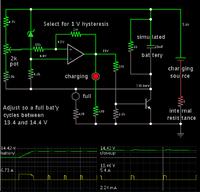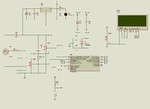pic.programmer
Advanced Member level 3
Can I use TIP122 instead of electromechanical relay ?
I am making a battery charger using PIC18F26K22. The battery is charged from solar panel. I want to know two things.
1. What should be the current rating of the solar panel ?
Solar Panel is 12V and battery is also 12V.
The battery is charged in two modes, boost and trickle charge modes.
In trickle charge mode the relay makes a lot of noise and hence I want to replace it with a power transistor or mosfet.
Can I use TIP122 instead of the relay ? Is power mosfet a better solution ? If yes, which mosfet can I use.
Please provide a circuit for connecting mosfet between solar panel and battery.
I am making a battery charger using PIC18F26K22. The battery is charged from solar panel. I want to know two things.
1. What should be the current rating of the solar panel ?
Solar Panel is 12V and battery is also 12V.
The battery is charged in two modes, boost and trickle charge modes.
In trickle charge mode the relay makes a lot of noise and hence I want to replace it with a power transistor or mosfet.
Can I use TIP122 instead of the relay ? Is power mosfet a better solution ? If yes, which mosfet can I use.
Please provide a circuit for connecting mosfet between solar panel and battery.



